-
Posts
106 -
Joined
-
Last visited
Content Type
Profiles
Forums
Articles
Gallery
Downloads
Events
Posts posted by forging-fool
-
-
-
9 hours ago, Borntoolate said:
that's awesome! And I could do that! I have just a little skill but I don't know what to do with it. I am looking for some sort of creative outlet. This makes me think. Awesome!!!!!
Then there is that pesky day day job that pays all the bills and takes so much time! grrr.
Umm? Did I say awesome? Yeah ok I guess I did.
It is so simple yet combined it is ... awesome.
Thank you, I appreciate the feed back.
-
-
1 hour ago, Frosty said:
Thank you for a beautiful production all round. Watching you forge each element was high end instructional video. The camera work was masterful, great lighting in some difficult conditions, great angles and framing and the editing was icing on the cake. Heck the music fit well and wasn't overwhelming.
Thanks both of you guys, you're a killer team. Please keep them coming.
Frosty The Lucky.
Thanks Frosty.
-
Thanks guys.
-
Thanks fellas. Unfortunately I did not get to photograph it before it found a new owner. I've been meaning to go get photos of it, as soon as I do I'll post them.
-
4 hours ago, gote said:
Very nice design
Thank you.
-
This is a short film I made some time ago in collaboration with a young film maker Simon Watson. We filmed it over two days, making a sculpture from start to finish. The sculpture was not pre-designed, it was an Idea I had been think about for maybe a week. A lot of the time with sculpture I like to work from my head instead of drawings, it feels more natural that way. Hope you enjoy it.
-
So Thomas is mild steel and stainless steel styles?
-
You are right, just looked at my photo's from the last time I was there back in 2007, thay are pass-throughs not collars. I stand corrected. But that dose not mean collars and unreliable.
Wrought iron is a martial not a style. That's like saying the 60's was style. It has come to loosley mean traditional Georgian style forge work but it is still a misunderstanding of the term.
-
3 minutes ago, SmoothBore said:
A closer examination of the referenced post will reveal a desire to reinforce " critical corners with hidden welds".
I would do this, because I've lived in the real world for over 60 years, ... where unforeseen influences often come to bear.
The original post by "Jonathan", clearly indicated a beginner's level of expertise, and a desire to create something of enduring quality and utility.
The question posed, was ... "Do collars, bradded tenons, and rivets need to be reinforced with a weld?"
In the case of a neophyte hoping to successfully complete a project of this sort, ... the simple answer is YES.
Having made no mention of specific Luddite tendencies, it would seem that "Jonathan" was seeking advice from more experienced practitioners.
It is my opinion, that sacrificing strength and utility, on the altar of traditional esthetics, is not the kind of choice that evolved our predecessors to the current state of the art.
.
I too live in the real world. I still have the first thing I made with forged collars, in fact I learnt to make them on that project and they have never budged. The largest protect I made using them was an arch, 12ft tall and 16ft wide, it is held together completely with collars and never moved. None of the collars I've made over my carrier have ever failed. The first ever Iron bridge in England is partly held together with collars. Johnathan may not be experienced, but he can learn. I've learnt most of my skills by putting it into customers work, it's a great motivator to getting it right.
To be honest I've had people tell me traditional forged joinery was not reliable all my carrier but the proof is not just in my work it's in the multitude of fully forged work still doing it's job. Now I'm not telling Johnathan what he should do, if he wants to weld then collar that is his chose and is as lagitimate as not welding. But it's just not true to suggest collars are not safe, the evidence far out ways that view.
-
5 minutes ago, littleblacksmith said:
was that forged or stock removal? very nice looking Knife!
Littleblacksmith
Forged, I don't have a good enough belt grinder to do stock removal and I'm old school a bit, prefer forging it.
-
6 minutes ago, SmoothBore said:
.
I would still reinforce critical corners with hidden welds.
.
Why do you feel the need to reinforce the welds?
-
In general rivets and collars do not need to be reinforced with welds, they are a proven method of joinery in steel and iron for thousands of years. I only use traditional joinery in all my work and have never had a failed joint. I don't know exactly what you mean by wrought iron style, but most customers that say that to me want scroll work, so I'll assume that's what you are talking about. The biggest tip on repeated scroll work is to get jigs made first. You can find plenty of how to advice on scroll jigs. It's amazing how with only three sizes of scroll you can fill huge panels, but if you want it to pop they need to be uniformed, which is what the jigs will do for you.
For future reference wrought Iron is a material not a style. It's a common misconstruction but very important to blacksmith history. (Not trying to be preachy here, just informative)
-
-
The local Farriers popped into my forge last week and dropped of some of their old rasps. So what do you do when the world gives you blunt rasps? You make upcycle knifes of course.
Overall length is 400mm or 16" in old money. Decided to keep the up-cycling theme going for the handle and used some old marine ply I had lying under the bench. I have to say this was a fun distraction for my usual work.
-
12 hours ago, 7A749 said:
Very nice. You do some excellent work. The touch mark you have is sweet too.

Thank you.
-
3 hours ago, Crazy Ivan said:
Even more stable is if you leave it as is and make a wooden wedge to drive through the gap and under the heel and wedge it down tight against the anvil. Zero play in the tool.
I would imagine it would be. But you would lose the benefit of being able to quick change the tooling I'd guess.
-
7 minutes ago, Reversepolarity said:
Nice job!
How long are those, and are you getting any flex?
I work in an industrial sheetmetal shop. We hand layout all fittings , and parts.
My dividers are my most used hand tool.
Thank you. They are 20", there's no flex. I'd imagine you would be using them all the time in a sheetmetal shop.
-
I find if you make the the section for the hardy hole longer, then bend it back on it's self but at a 90 degree to the first bend. You have enough mass to forgeweld it and forge it down to a snug fit for your hardy hole. Gives you a more stable tool.
-
On 5/17/2016 at 8:24 PM, Matthew D said:
Forgin-fool,
That is a very nice compass. How did you make the double hinge on the one half? Also, how much of that is forged to finish, or did you do some filing work too?
The hinge way hot cut. I find I get more precision with the hot cut rather than a fireweld. I hand forged it right down to a fine finish then used the hand file on hot metal to get the finish.
9 hours ago, rockstar.esq said:Forging-fool, I love the thumb screw!
Thanks. I can't remember where I saw this done first but I copied the idea from somewhere.
-
8 hours ago, matto said:
Did you drill and epoxy into the steps?? Beautiful design. Bet was fun getting all the punch and drifted holes right.
Yes epoxy was the best way to go with this project. The steps are made of unstable material, not stone, so I knew epoxy would help stabilize any problem areas. The punching and drifting weren't the problem with this. It was getting everything to flow that took the time. You cant really see in the photos but none of the steps are the same height or depth. So none of the arcs are repeats, they each had to be different so as to create the illusion of formality.
-
12 hours ago, Steve Sells said:
seems kinda short, if I was gonna poke dragons with it I would want it to be much longer. nice details tho
I feel 30" is enough.
-
25 minutes ago, ianinsa said:
F.F. I like the look of the railing ! However I have done work in many countries and all seem to require a top rail on or about 1050mm high and may nay allow the passage of a ball 115 (4") or thereabouts to prevent the "capturing"
 of children's heads. What's the case your side?
of children's heads. What's the case your side?
Regards i
There are slimier laws here. 1.1m is the minimum handrail height, which this is. As for 100mm passage, it is for the the customer to decide, as long as they are aware of the guidelines and the work is not open to public access. As this is private property well away from the public road there is no issue. Most of these codes in Ireland and the UK are actually guidelines that are taken as law by planing officers. It is discretionary to allow them if it is in keeping with the style of the architecture. Otherwise you'd never be able to create reconstruction of original ironwork for say an extension to a 18th century building.

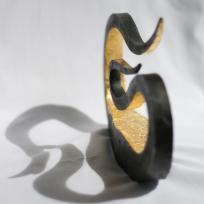
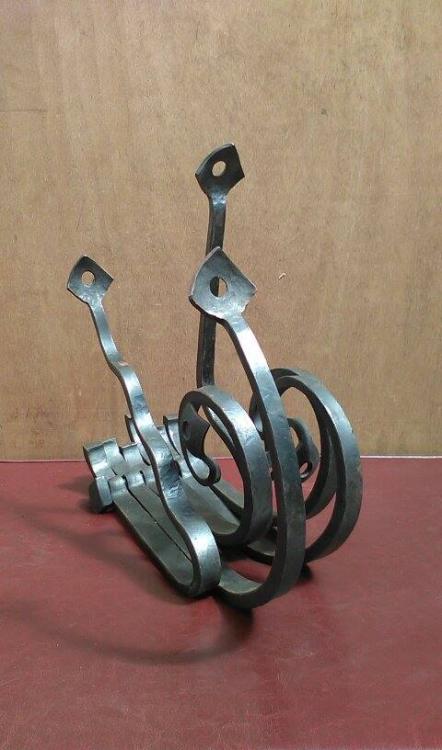
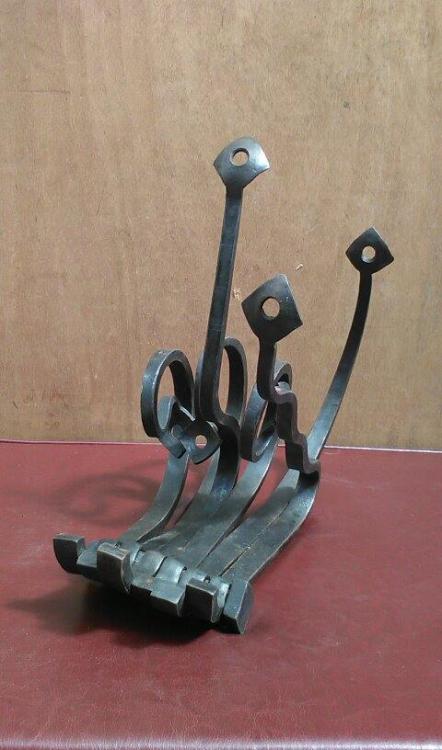
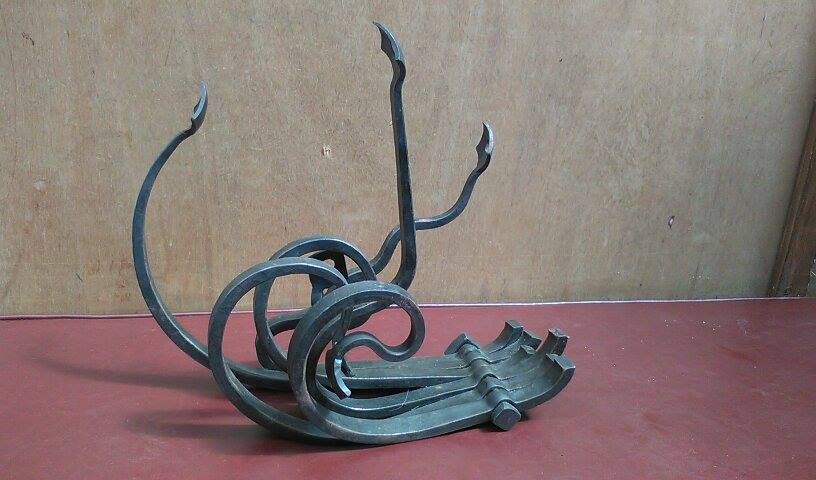

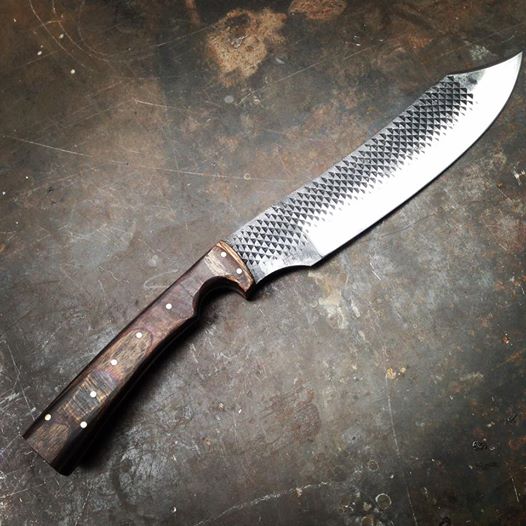
The Roses
in Metal Sculpture & Carvings
Posted
Thanks. I used JAX patina, you can get it on ebay.